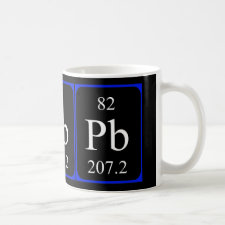Authors: Jagirani MS, Balouch A, Mahesar SA, Alveroglu E, Kumar A, Tunio A, Abdullah
Article Title: Selective and sensitive detoxification of toxic lead ions from drinking water using lead (II) ion-imprinted interpenetrating polymer linkage.
Publication date: 2021
Journal: Polymer Bulletin
DOI: 10.1007/s00289-021-03546-8
Abstract: The present study describes a new approach for the lead (II)-imprinted interpenetrating polymer linkage synthesis by ion-imprinted polymers. The development of lead (II) (Pb2+) ion-imprinted polymer by employing the 4-vinyl pyridine as a complexing agent and methacrylic acid as a functional monomer was used for the selective elimination of noxious Pb2+ ions from an aqueous environment. Different analytical techniques have been used for the characterization of synthesized Pb2+ion-imprinted polymeric material such as scanning electron microscopy, energy-dispersive X-ray, and Fourier-transform infrared spectroscopy. During adsorption study, different parameters have been optimized such as pH, agitation time, time study, and adsorbent dose to achieve maximum adsorption capacity. This study well fitted the Langmuir isotherm model, while the kinetic study was well defined by pseudo-second order. The relative selective factor (K') of Pb2+ ion and coexisting ions was greater than 1 due to the imprinting effect. The maximum adsorption capability of Pb2+ ion-imprinted polymer was 85.47 mg g-1 at pH 6. The developed method obtained a good linear range from 10 to 100 μg L-1 concentration, with a limit of detection (0.74 μg L-1) and a limit of quantification (2.48 μg L-1). The developed methodology was validated by the spiking addition method and obtained good results in accordance with spiking values in real samples
Author keywords: Lead (II)-imprinted interpenetrating polymer linkage, Solid-phase extraction, Lead ions, selectivity, Real water samples



Join the Society for Molecular Imprinting

New items RSS feed
Sign-up for e-mail updates:
Choose between receiving an occasional newsletter or more frequent e-mail alerts.
Click here to go to the sign-up page.
Is your name elemental or peptidic? Enter your name and find out by clicking either of the buttons below!
Other products you may like:
 MIPdatabase
MIPdatabase









